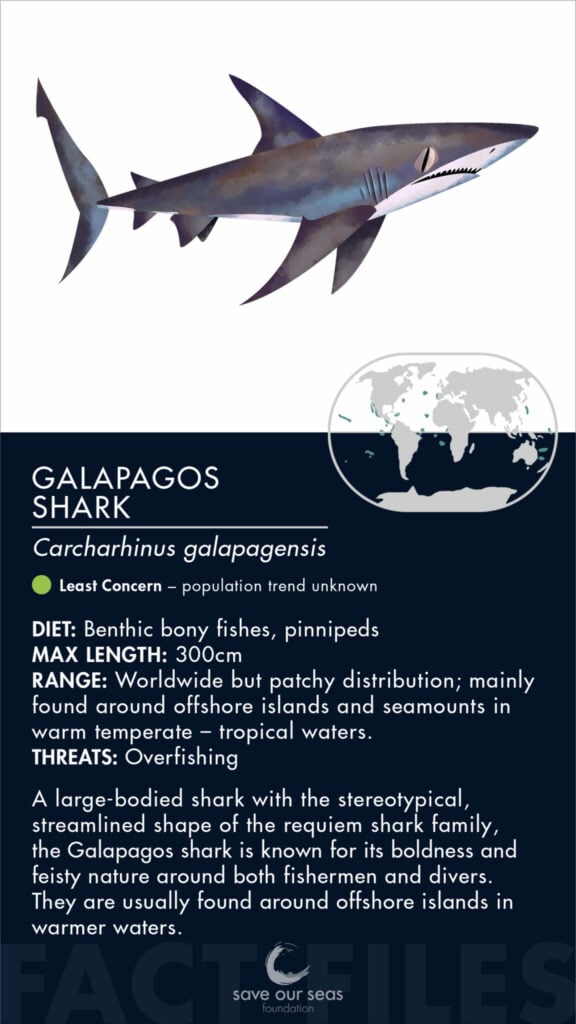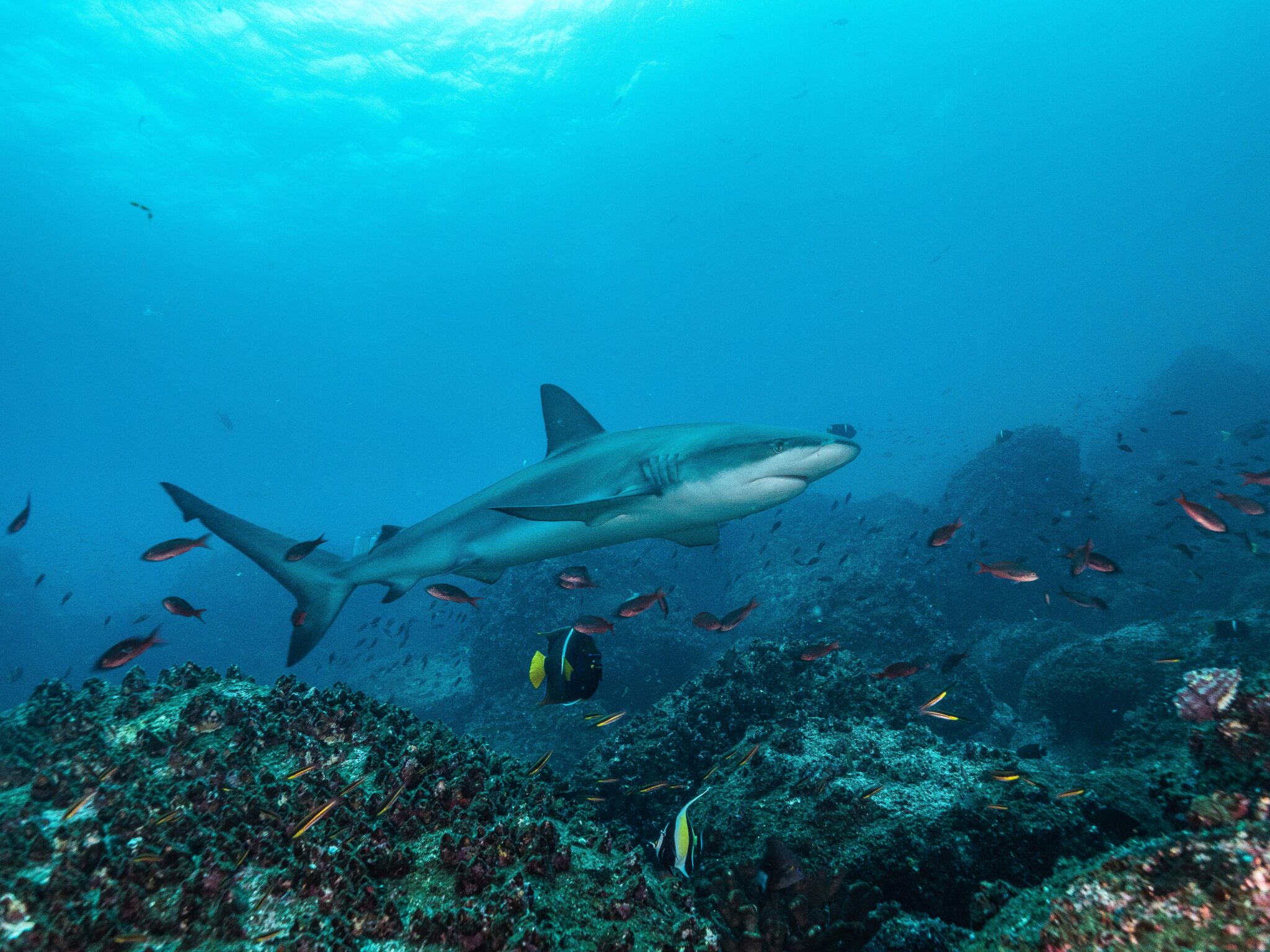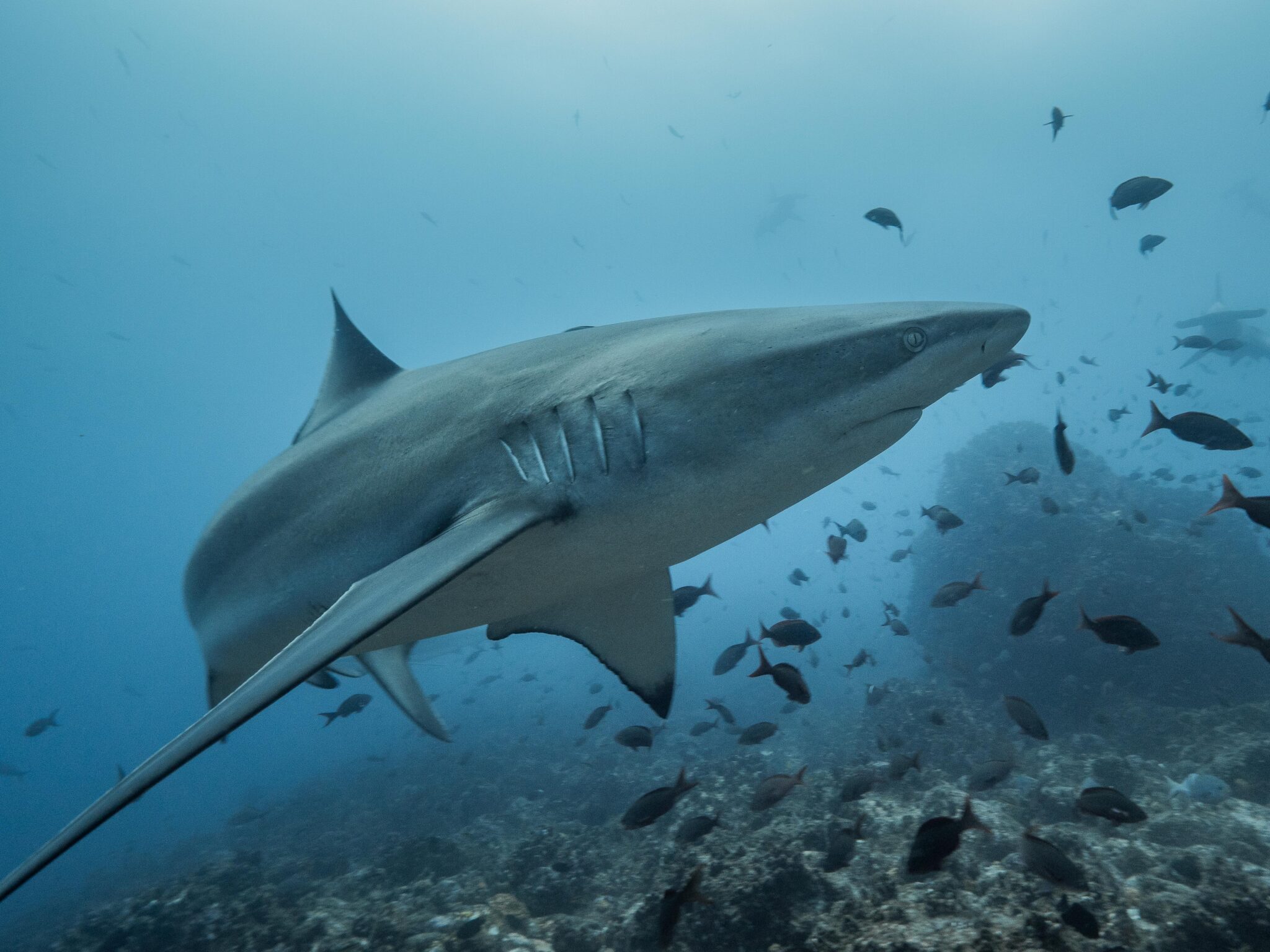Galapagos shark
Carcharhinus galapagensis



Contrary to what the name suggests, the Galapagos shark is found in warmer waters all around the world, but it was first discovered in the Galapagos. A member of the requiem shark family, this relatively large shark is an active predator of benthic fishes. It is also a bold and inquisitive species, well known for interacting with fishermen and divers and sometimes showing ‘hunch’ displays as a warning.
IDENTIFICATION
Slender, streamlined body with large pectoral and dorsal fins. First dorsal has a short free rear tip. Brown-grey upper body with white band on the flank, white underside. ‘Dusky’ fin tips. Broad, rounded snout. Upper teeth are triangular and serrated, bottom teeth thinner and more pointed.

SPECIAL BEHAVIOUR
Galapagos sharks form aggregations, but these are not coordinated schools like that of the scalloped hammerheads also found in the Galapagos. They are also cannibalistic, so juveniles tend to stay away from aggregations of adults in safer, shallower waters.
REPRODUCTION
Galapagos sharks are aplacental viviparous. Embryos receive nourishment from a yolk-sac while inside the womb, but are born live. It is thought that Galapagos sharks breed every 2 to 3 years. Nursery sites can be found in shallow waters less than 25 m.
HABITAT AND GEOGRAPHICAL RANGE
Galapagos sharks are found in clear, warm waters on coral reefs or rocky bottoms. They are classically associated with offshore islands and seamounts, where there are strong currents. They have a patchy but worldwide distribution in warm-temperate to tropical waters.

DIET DESCRIPTION
Galapagos sharks feed mainly on benthic bony fishes, but have been known to eat fur seals and sea lions in the Galapagos.
THREATS
Galapagos sharks are fished for their meat and fins in some parts of their range.
RELATIONSHIP WITH HUMANS
Galapagos sharks are highly inquisitive and will come to the surface to investigate disturbances. They have been known to approach divers and are said to be quite difficult to deter once interested. Galapagos sharks will sometimes perform ‘hunch’ displays in the presence of divers, where their back is arched, head raised, and caudal and pectoral fins lowered. This behaviour can precede more aggressive behaviours such as pitching, rolling and biting. However, bites only happen occasionally and only one fatality has ever been recorded.
CONSERVATION
The Galapagos shark’s close proximity to offshore islands has often afforded them some level of protection by the introduction of large, offshore MPAs. For example, the Galapagos Marine Reserve has outlawed all shark fishing (although some illegal activity still occurs). In November 2022, parties to the Convention on the International Trade of Endangered Species (CITES) voted to list all species of requiem shark – the family to which the Galapagos shark belongs – on Appendix II, introducing controls on the trade of these species.
FUN FACTS
Galapagos sharks and dusky sharks are so similar in appearance that the two are often confused. But recent molecular genetic analyses have also found very little genetic difference between them. It’s thought that the main differentiation is habitat – dusky sharks may be the continental version of the Galapagos shark!
Galapagos sharks don’t really respect your personal space…they have been known to ‘boop’ divers on their mask, and only retreat if you shout through your regulator, sending a stream of bubbles their way.
References
IUCN Red List of Threatened Species. 2019. Galapagos shark. https://www.iucnredlist.org/species/41736/2954286.
David A. Ebert et al. 2021. Sharks of the World: A Complete Guide.
Galapagos Conservation Trust. Galapagos shark. https://galapagosconservation.org.uk/species/galapagos-shark/.




